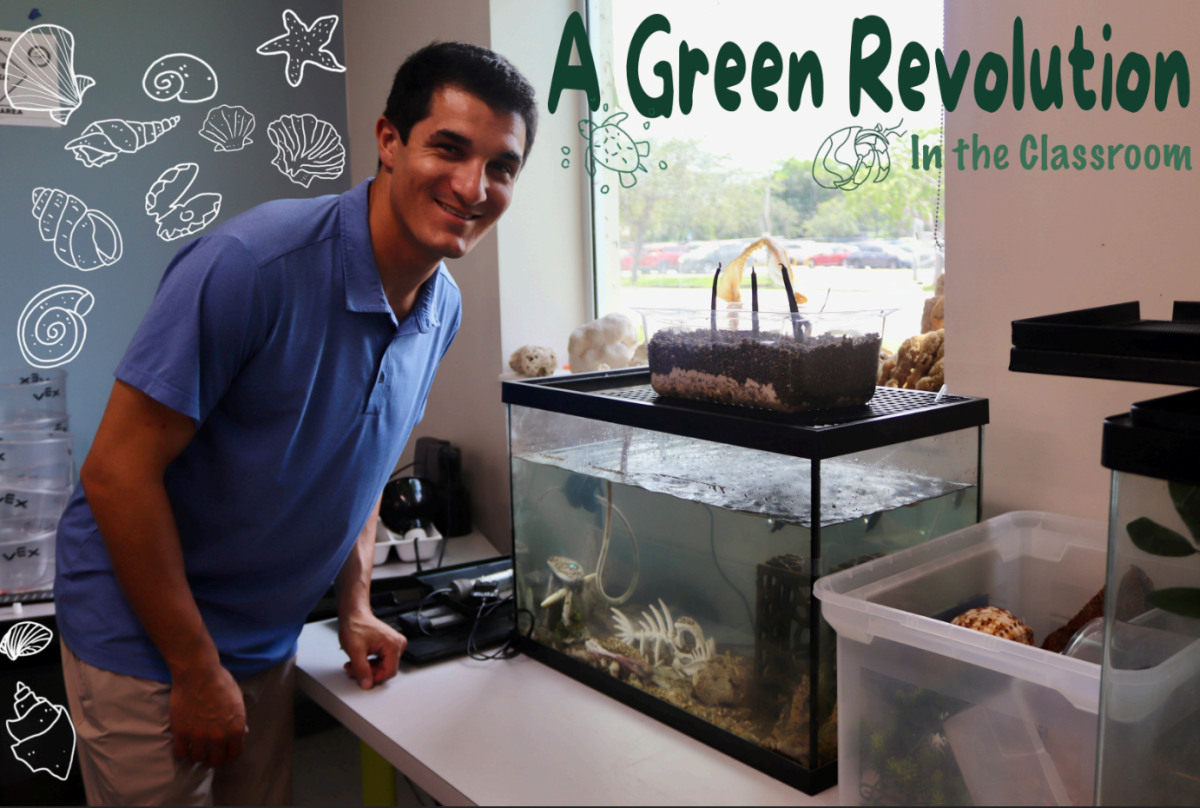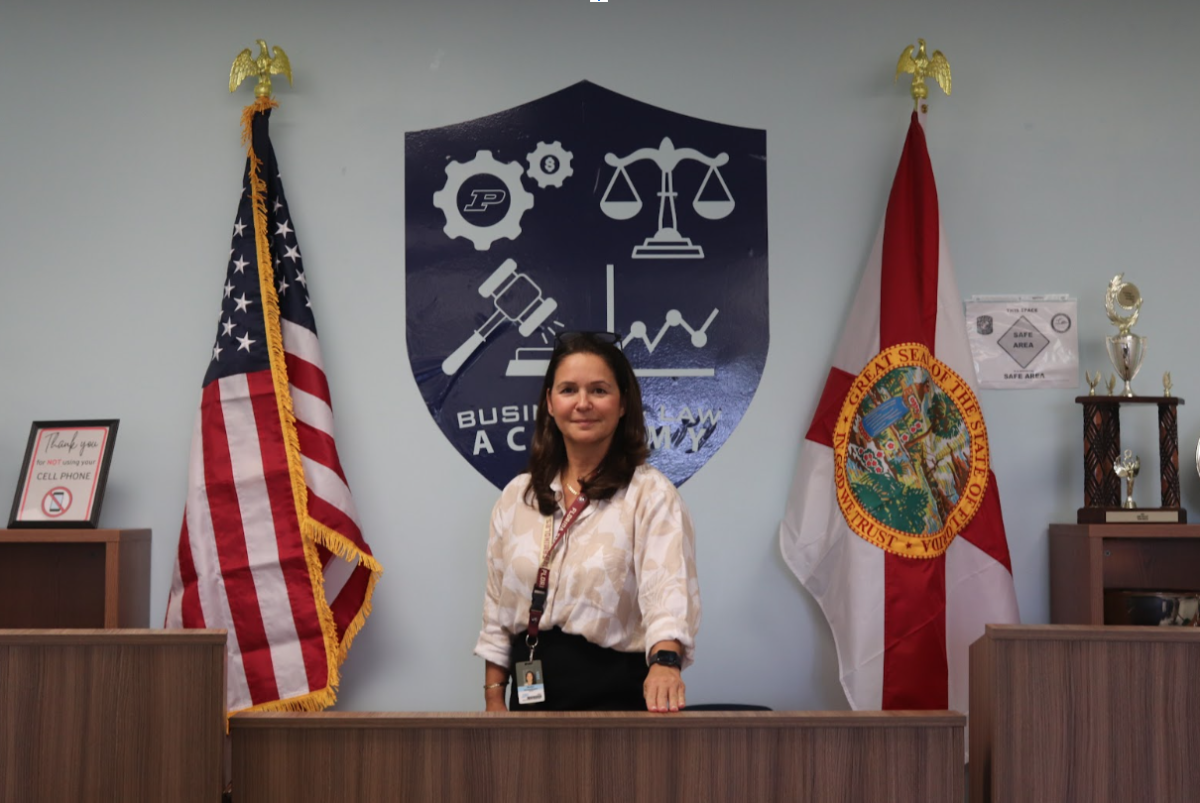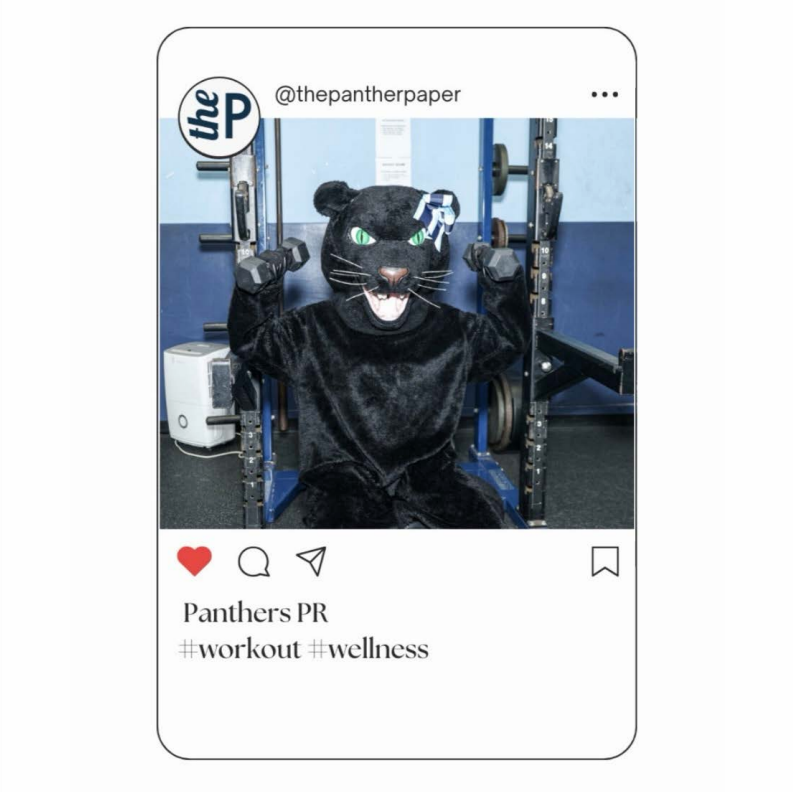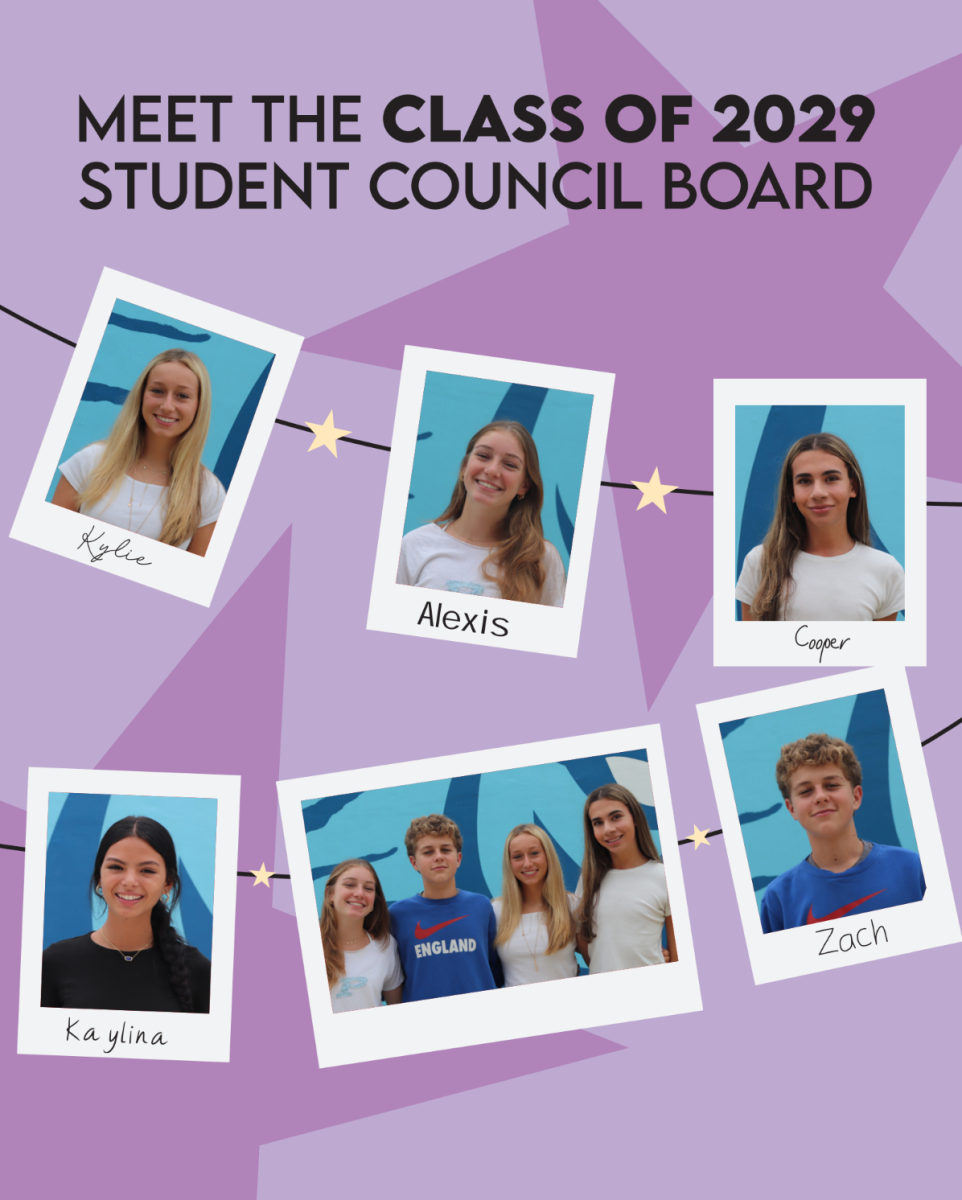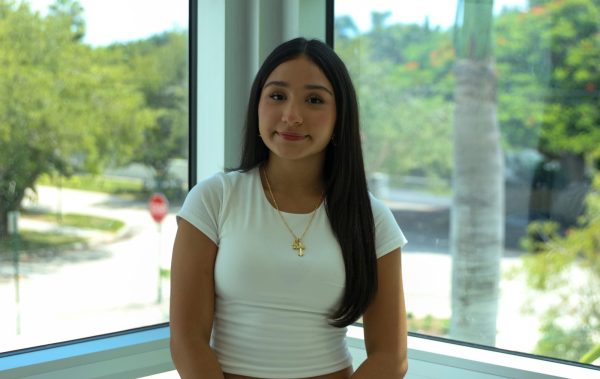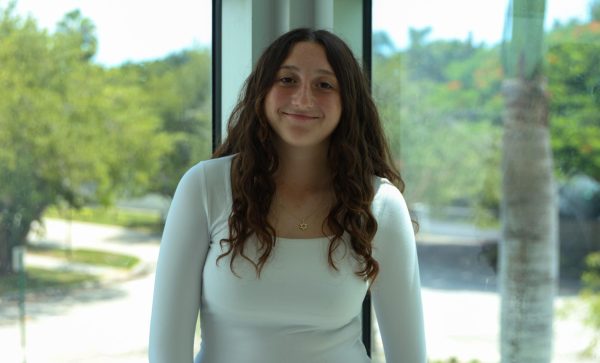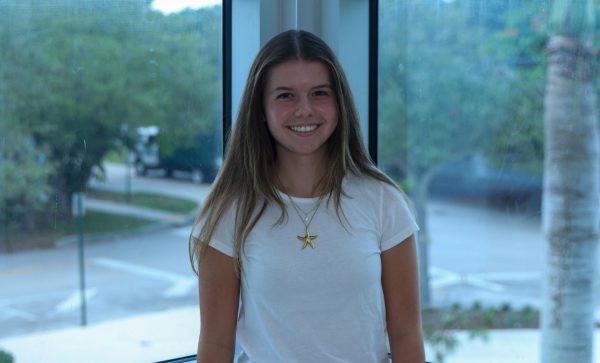The air in room 1139 at Miami Palmetto Senior High hums with a soft, steady rhythm. The gentle gurgle of water and the quiet whir of an air pump are the only sounds present, a stark contrast to the usual hustle of a high school classroom. Under the guidance of MPSH Marine Science honors teacher Nicolas Quintaros, a living ecosystem is thriving. His classroom consists of rows of vibrant lettuce and basil growing from beds of gravel as their roots dangle into a small tank where fish, soon to be tilapia, swim.
This is an aquaponics system, a unique project that transforms a science concept into a hands-on lesson. It is a simple, self-sustaining loop. The fish produce waste that provides essential nutrients for the plants, while the plants filter and clean the water for the fish. For Quintaros’ marine science students, the aquaponics system is more than a science project. Rather, it is a real-world view of how food can be grown sustainably and how all life on Earth is connected.
Quintaros has a master’s degree in aquaculture and has always wanted to bring his passion for marine science into the classroom. The opportunity arose when his new classroom, with its ample space and natural light, allowed him to transform a simple hydroponics kit into a dynamic aquaponics system.
“I really hope to teach my kids how certain types of food are actually grown and how there are different systems,” Quintaros said. “Especially looking at future-proof systems for growing our food in more sustainable and organic ways.”
He views aquaponics as more than just an experiment: it is a way to address global challenges.
“People don’t care about things they don’t understand,” Quintaros said. “Marine science is something you have to experience to truly learn why you should care. This is a way we can bring a part of that experience into the classroom and help them understand why these things are important to our food.”
For students like junior Vibhu Gupta, the system was a complete surprise.
“I’ve never done anything like that,” Gupta said. “It’s kind of interesting how we get to use different materials like the aquaponics system. [It’s] pretty cool.”
Vibhu and his classmates were tasked with designing the system themselves, converting a hydroponics kit that grows plants in water using liquid fertilizer into a fully functioning aquaponics system. This hands-on process has been a significant learning curve, challenging students to use problem-solving skills and responsibility.
“The students had to design the systems themselves,” Quintaros said. “I didn’t necessarily give them exact instructions. They took a hydroponics kit and had to convert that into an aquaponics kit for use in our classroom.”
Gupta’s favorite part of the project is the practical knowledge he has gained. He was surprised to learn that both the plants and the fish in an aquaponics system require light to survive. He also expressed how the project has helped him better understand how plants and animals can coexist and thrive in the same environment, a concept he had never considered before.
Quintaros sees the aquaponics system as a stepping stone to even bigger projects. His long-term goals include expanding the system to grow various species of fish as well as exploring a mangrove restoration project. He hopes to partner with an outside organization to grow mangroves in the classroom and then plant them on the coastline, allowing students to revisit the trees they helped nurture for years to come.
“Our students can come back and visit that piece of coastline and say, ‘When I was in high school, I actually planted those trees that are now 30 feet tall,’” Quintaros said.
The current aquaponic system project goes beyond a simple lesson in biology and chemistry. It connects students to the real-world implications of sustainability, conservation and food systems, while creating a sense of stewardship and a deeper appreciation for the environment.
Quintaros’ aquaponics system is a powerful example of how hands-on, experiential learning can transform education. By bringing a living ecosystem into the classroom, he not only teaches marine science concepts but also motivates students to think creatively, solve problems and become active participants in a more sustainable future.
“I just think marine science is such an interesting topic to discuss. Just in general, when you look at the world’s problems, a lot of it can either be solved through marine science or with marine science in mind,” Quintaros said.



